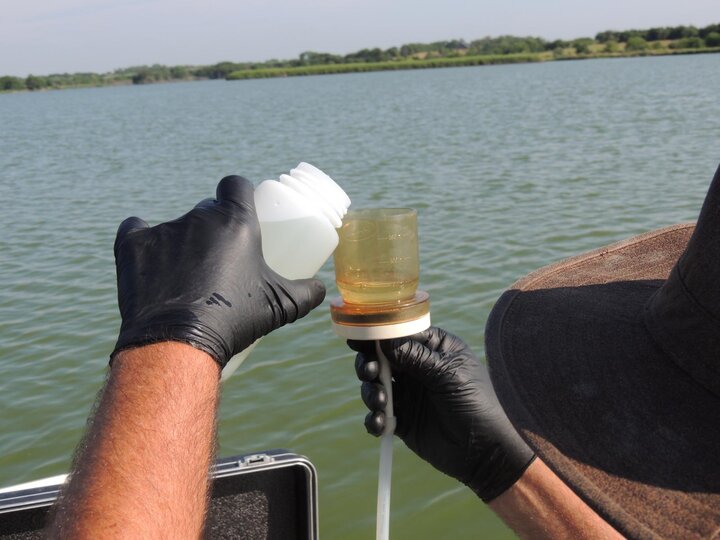Nitrate in Nebraska
From increased water bills to closed lakes to tainted drinking water, high nitrate levels are affecting thousands of Nebraskans. Nitrate can’t be seen or smelled, but it is in Nebraska’s groundwater, which is the source of drinking water for much of the state. Nitrate also contaminates surface water such as streams and lakes.

Why Nitrogen? What is Nitrate?
Nitrogen is a valuable fertilizer source that keeps Nebraska growing abundant landscapes and crops. Nitrogen that does not get used by the crop ends up in Nebraska’s streams, lakes and groundwater. Nitrate is the most common form of nitrogen found in water.
Nitrate Contamination in Groundwater
Nitrate contamination in the groundwater impacts nearly 33,000 Nebraskans’ drinking water, far more than arsenic or uranium, according to the 2018 Nebraska Public Water Supply Program Summary Report. Nitrate ends up in the groundwater a number of ways, but in Nebraska, the primary source has been overapplication of nitrogen fertilizer on irrigated corn and soybean fields over decades.
Nebraska farmers rely heavily on irrigation and fertilizer to grow millions of acres of corn and soybeans used in the global food supply chain each year, which power the state’s multibillion dollar ag economy. But high nitrate levels create problems for the small communities and rural water users that dot Nebraska’s rural landscape. According to the U.S. Environmental Protection Agency (EPA), drinking water with nitrate levels above 10 parts per million (ppm) of nitrate is not safe. If a community’s public drinking water supply exceeds10 ppm nitrate, the community must find a way to fix it.
While large cities such as Lincoln and Omaha treat drinking water before it goes into people’s homes, it’s common for many Nebraskans in small towns and villages to drink water pumped straight from the ground. When a town’s lone drinking water well gets contaminated with high nitrate levels, a treatment plant isn’t usually an option because of costs, maintenance requirements, land space and more. Instead, small communities explore options including drilling a new well, blending water from multiple wells together, or hooking up to another comunity’s water system. To achieve this, small communities apply for grants, take out low-interest loans or raise water rates.

Nitrate Contamination in Lakes and Streams
Nitrate contamination also impacts Nebraskans’ ability to enjoy the state’s water resources.
Swimmers may not realize it, but when they see slimy algae in the water or there is a no-swimming sign, nitrate is likely one of the culprits. From 2010 to 2019, 187 no-swimming warnings were issued at 22 lakes and reservoirs because of Harmful Algal Blooms (HABs), according to the Nebraska Department of Environment and Energy. HABs are the result of high levels of nutrients, including nitrate, and favorable weather conditions.
Another recreational impact of high nitrate levels in surface water is poor fishery conditions. The presence of nitrate contributes to excessive plant growth, excessive algae growth, modified pH and lowered oxygen levels.
High levels of nitrate negatively impact Nebraskan’s quality of life, economics, human health, and recreational opportunities.